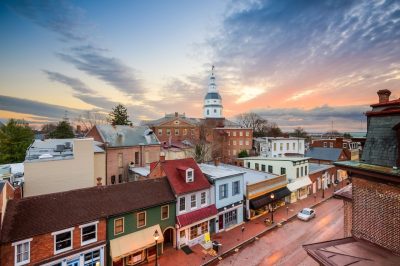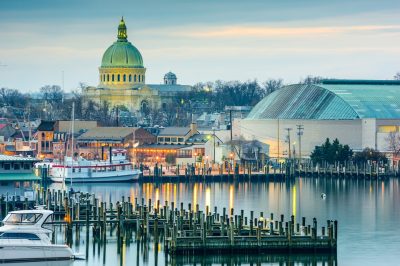 There are several states which are set to vote some major changes to their gaming fields at the very beginning of November and the state of Maryland is one of them. State residents will have the chance to cast their vote in support of or in opposition to the proposed Question 1 aiming to introduce some changes to the way gambling revenue is utilized for education.
There are several states which are set to vote some major changes to their gaming fields at the very beginning of November and the state of Maryland is one of them. State residents will have the chance to cast their vote in support of or in opposition to the proposed Question 1 aiming to introduce some changes to the way gambling revenue is utilized for education.
November’s Ballot has been one of the widely discussed topics for the past several months as more and more people seek information and details regarding the ballot questions introduced in their own state. Maryland is among the several states which would aim to elevate its gaming field to a new level as the first question subjected to voting directly affects gaming revenue generated by casino style gaming.
Education Lockbox Amendment Eyed by Many
 Members of the community that have registered for voting will vote with a “yes” or a “no” on the Gambling Revenue Dedicated to Education Lockbox Amendment. Those of them who decide to give their affirmative vote on 6th November will give green light to the amendment of the constitution, allocating a portion of gambling revenue to the education field.
Members of the community that have registered for voting will vote with a “yes” or a “no” on the Gambling Revenue Dedicated to Education Lockbox Amendment. Those of them who decide to give their affirmative vote on 6th November will give green light to the amendment of the constitution, allocating a portion of gambling revenue to the education field.
Individuals who vote with a “no” on Question 1 of the ballot are going to essentially express their opposition to such amendment and prevent the supplementary funding from boosting the public schools as well as a wide variety of educational programs. Ever since gambling launched legal operation across the state, lawmakers have been touting its benefits for the community. Among them is the Education Trust Fund greenlighted by Governor Martin O’Malley. However, in reality, the said fund was utilized for funding other programs in addition to public schools.
Now Question 1 gives hope to the field that part of the casino revenue will be used for the actual improvement of the education field. At the moment, the trust fund witnesses almost half a billion annually which are then used for the improvement of the sector, but this amount does not come close to the $6.6 billion spent this fiscal year as a result of the established funding formulas. All the way to 2023 the revenue of gaming operation would be offered as supplemental to the minimum education funding amount.
Projected Impact of the Amendment
 As a result, the following years are projected to see progressively increasing supplemental funding starting as early as next year. Some $125 million will be poured in for the fiscal year of 2020, followed closely by $250 million for 2021. The year 2022 is going to witness $375 million, whereas fiscal 2023 will use the entirety of the revenues raised.
As a result, the following years are projected to see progressively increasing supplemental funding starting as early as next year. Some $125 million will be poured in for the fiscal year of 2020, followed closely by $250 million for 2021. The year 2022 is going to witness $375 million, whereas fiscal 2023 will use the entirety of the revenues raised.
Furthermore, the field would see additional funding provided for the future development of educational programs dedicated to children in their formative years. It will also ensure that high school students have access to free college credit and degrees while they are still in school. Their teachers will also see a wide variety of programs aiming to elevate their performance and guarantee continuous development.
In addition to that, the 12 public schools would also see funding for renovation and maintaining the good condition of facilities. As of now, some $750,000 in cash contributions have been raised by the Maryland State Education Association and the National Education Association in support of the campaign.
The move comes at a time when state lawmakers are preparing for the upcoming years when a state commission would make a recommendation for the education funding formulas in Maryland to be enhanced. More than a decade and a half ago, in 2002, the Bridge to Excellence in Public Schools Act was adopted by the state’s General Assembly with the latter trying to significantly increase the states’ spending on public education on an annual basis.
The state has yet to slap an updated price on the established in 2002 funding formulas with the help of a commission led by former University System of Maryland Chancellor William E. “Brit” Kirwan. In the upcoming months, more light would be shed on them which is why this constitutional amendment might turn out being a crucial one. It is considered a step in the right direction, as it would cover at least a portion of the ultimate figure eventually established by the Kirwan Commission.